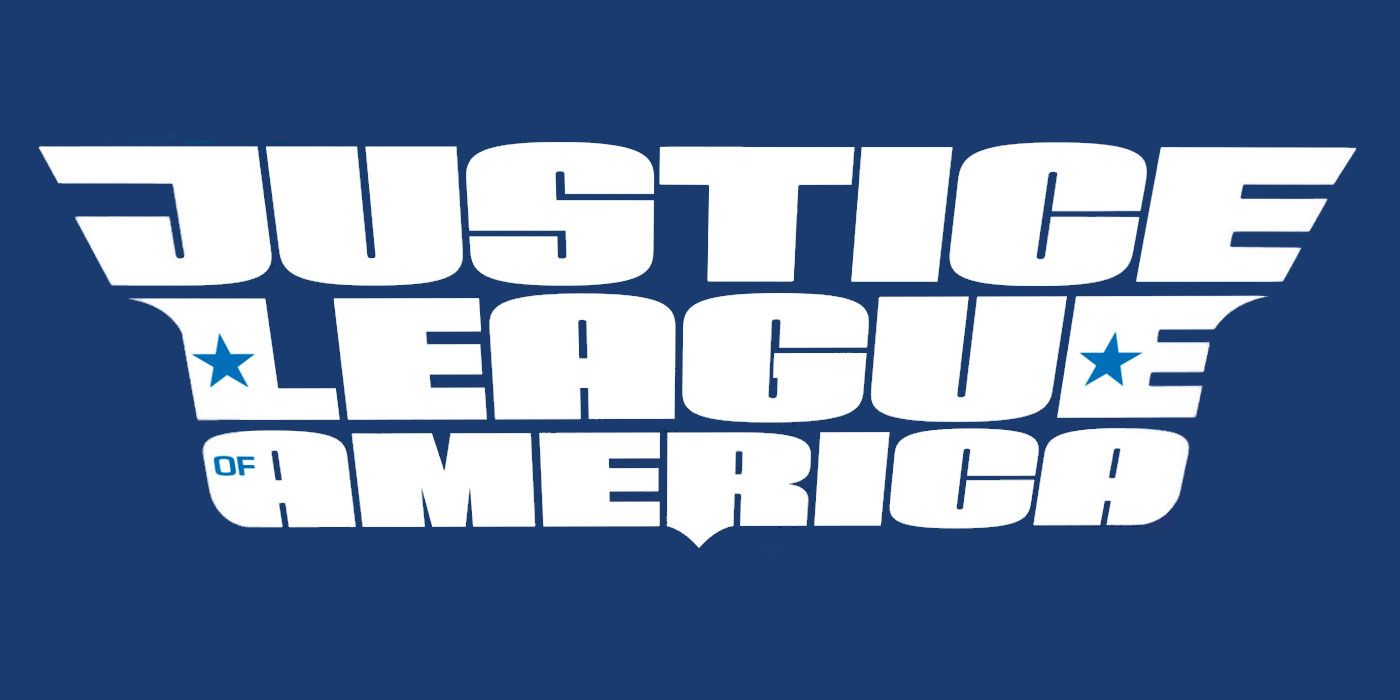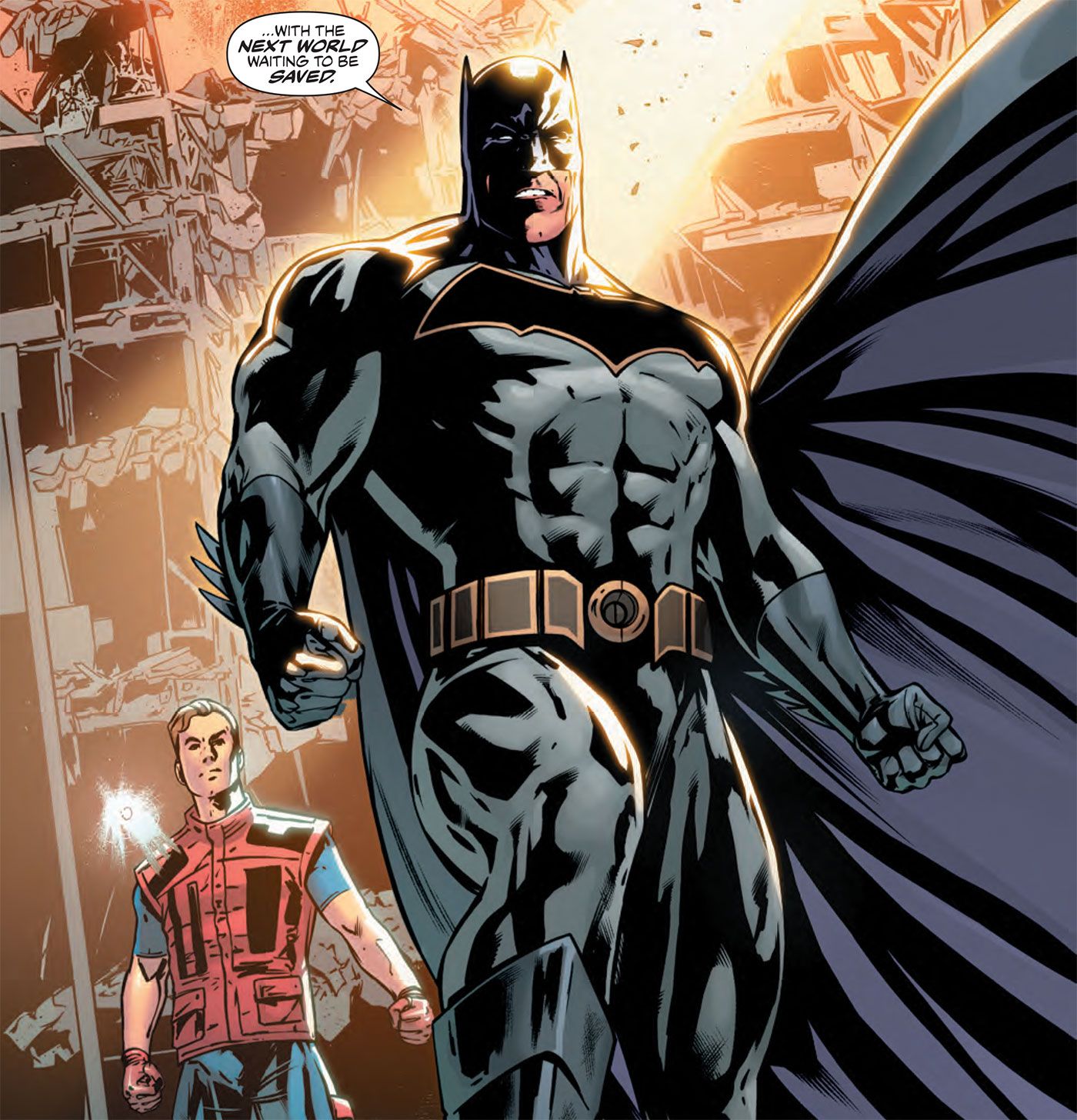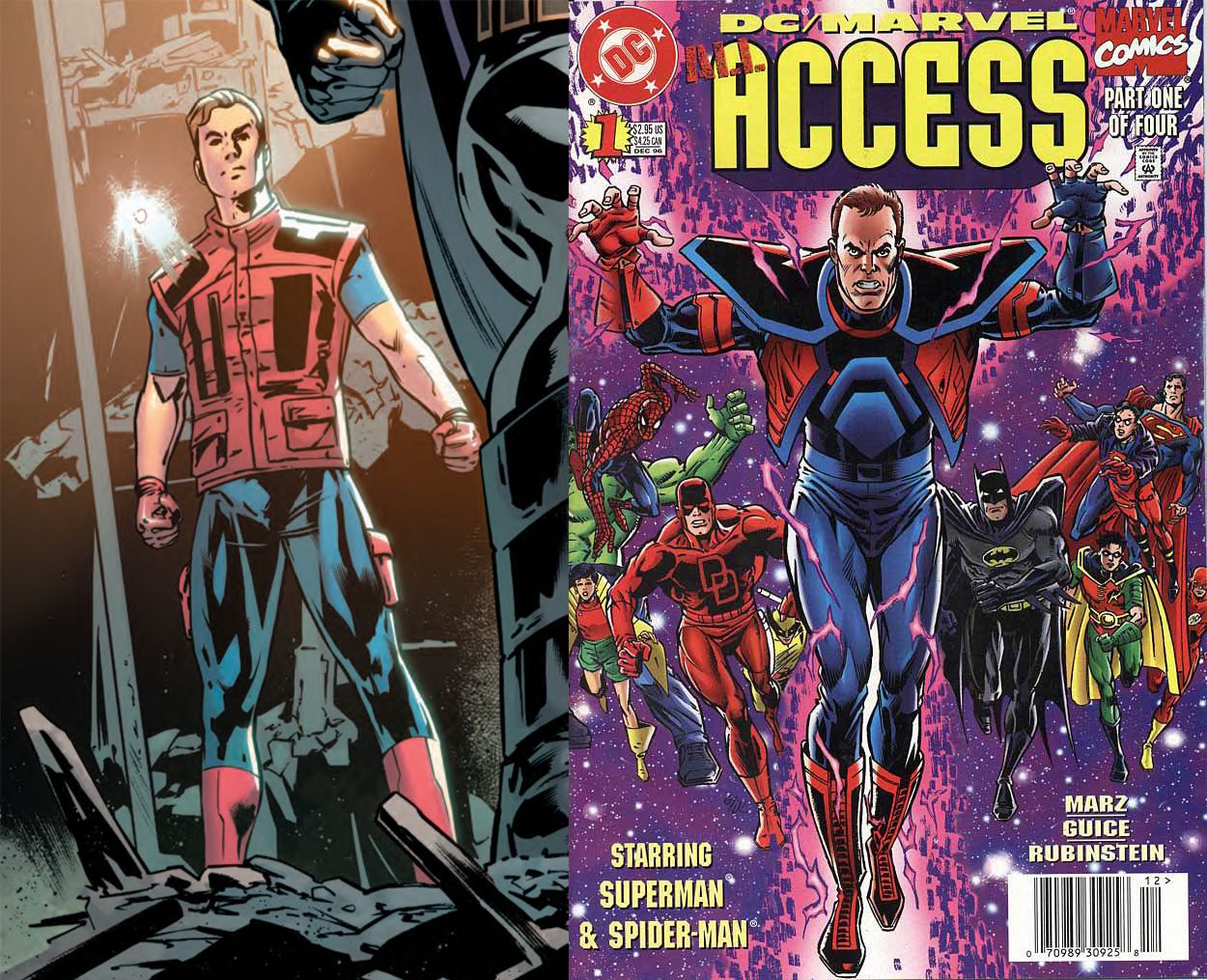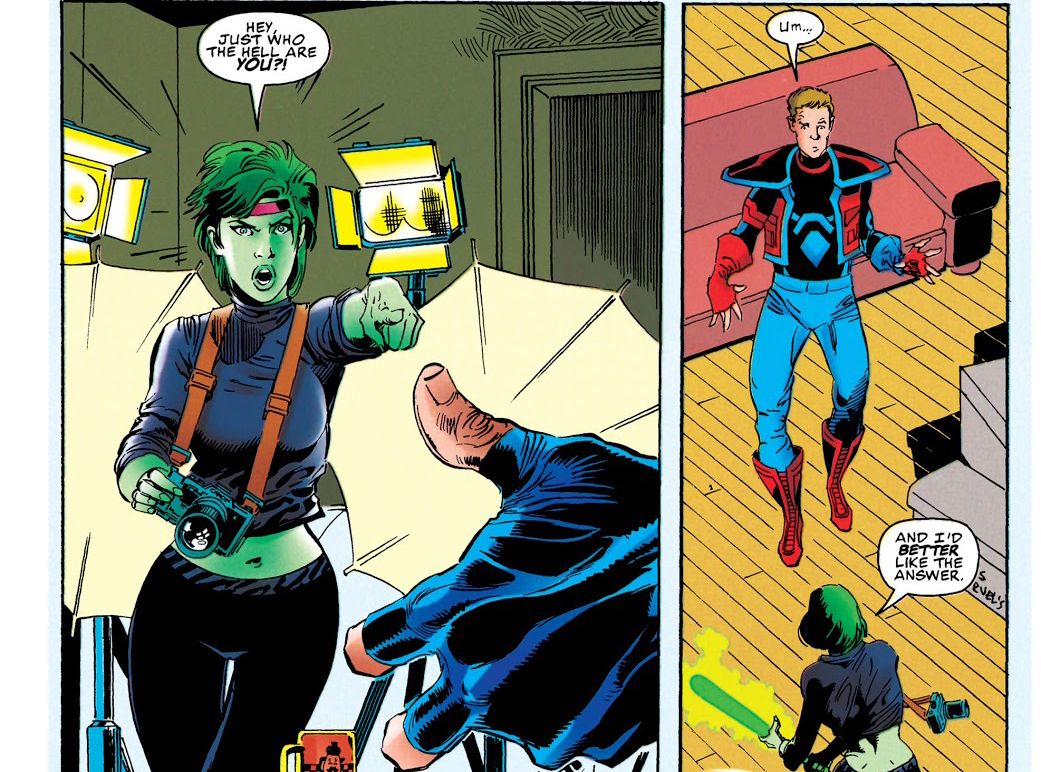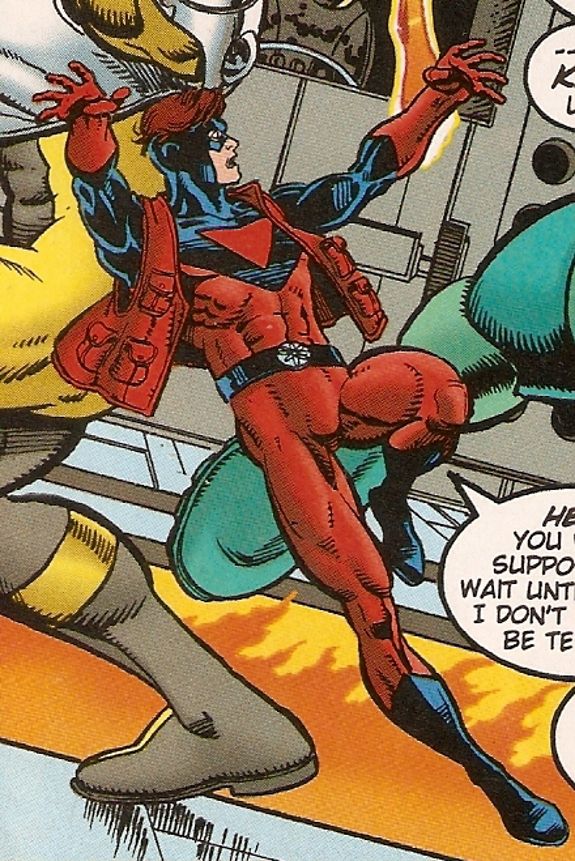WARNING: This article contains major spoilers for Justice League of America #24 by Steve Orlando, Neil Edwards, Daniel Henriques and Andy Owens, on sale now.
UPDATE:Â Writer Steve Orlando has taken to Twitter to set the record straight:
Oh well! Read on to see what could have been...
The current series of Justice League of America has delighted in shining the spotlight on lesser-known and neglected DC heroes, from founding member Lobo through to the eyebrow-raising return of Alan Moore and J.H. Williams III's Promethea. This has given the book much the same feel that the League had had between the Detroit era and Grant Morrison and Howard Porter's JLA, which represented the return of the "Big Seven" -- a wild assortment of characters whose adventures have real stakes, who can change and evolve since they don't have their own ongoing series to run.
Writer Steve Orlando's early arcs appeared to be modeled fairly strongly in the Giffen/DeMatteis/Maguire Justice League run of the mid-eighties (though, it must be said, with far less Bwa-ha-ha), but now it seems he's shifted gears toward the '90s and early '00s, reintroducing not only Promethea but Grant Morrison and Mark Millar's Aztek.
RELATED: Promethea Makes Her DCU Debut In Justice League of America – But How?
Now, though, if the hero standing beside Batman on the last page of Justice League of America #24 is who we think it is, Orlando and company have pulled off the most unexpected '90s flashback of all.
Is that -- could that be -- Marvel vs. DC's Access?
All Access
After an extended absence, the Dark Knight returns to the team he founded with a dire warning about "the next world waiting to be saved." Beside him is a character who is not named, but is clearly important -- he shares Batman's dramatic entrance, after all.
Batman's declamation about "another world" seems relevant, and looking at that costume, fans of a certain age might immediately exclaim, "Holy crap, is that Access?" There was actually some debate at CBR as to whether this was in fact the case. And while the evidence is not conclusive, it is compelling.
First, since really all we have to go on is one image, let's look at that costume:
Take away the shoulder pads, roll up the sleeves… the costume is damn close.
While he's standing beside Batman, the reveal doesn't rely on the reader knowing who he is, suggesting the creative teams knows this is something of a deep cut. The reveal is "Batman's back!" with "And who's his friend?" coming second. Access would certainly fit the mold of a character a.) whose appearance would be a shock and surprise to those who recognized him, justifying his place on the page, and b.) who hasn't appeared in so long -- who has so few appearances overall -- that many, perhaps most readers would be left clueless.
RELATED: DC’s Justice League of America Just Reinvented Classic ’90s Character, Aztek
Contrast this with the Aztek reveal. The original Aztek didn't make a huge splash, but he did have his own short-lived ongoing series and featured prominently in several JLA arcs by major creators, which live on in perpetuity thanks to trade paperbacks and digital sales. And so when Orlando debuted the new Aztek, he did so first with a cameo in shadow, then a full-issue feature.
As for Access? His history is short... and complicated.
Page 2: [valnet-url-page page=2 paginated=0 text='A%20Brief%20History%20of%20Dc%20%26%20MArvel%27s%20Shared%20Hero%2C%20Access']
DC vs. Marvel, Marvel vs. DC
Axel Asher first appeared in 1996's DC vs. Marvel #1, in which two cosmic "brothers" representing the Marvel and DC universes went to war over who had the best toys. Fans could vote on several of the matchups, which included Wonder Woman vs. Storm, Spider-Man (Ben Reilly) vs. Superboy (Kon-El), Superman vs. Thor, and more. The publishers shared top billing, with issues #1 and #4 titled DC vs. Marvel while #2-3 were Marvel vs. DC.
After inheriting the power to transverse dimensions from a mystical hobo, Axel becomes Access, the gate between worlds. When it looks like everything's about to collapse, it is Access who smushes everything together into the Amalgam Age of Comics, forging heroes like Super Solider (Captain America/Superman), Dark Claw (Batman/Wolverine), and so on.
RELATED: Justice League of America’s Promethea May Be a Different Character
Outside of DC vs. Marvel, its follow-up miniseries All Access and Unlimited Access, and the Amalgam comics, Access has appeared a grand total of one time, across both publishers. He appears in 1997's Green Lantern #87, where he shows up looking for Kyle Rayner, and promptly departs when Jade tells him Kyle's not around.
Here's the fun part: Access is co-owned by Marvel and DC.
What does that mean, exactly? The fact that he appeared in a non-crossover issue of Green Lantern may suggest that either publisher can use him at will, but the fact that neither has used Access in more than 20 years might suggest there are more complex issues at play. Or it could mean that, after the shine of the crossovers wore off, neither company really had much use for poor Axel Asher. The last time the two universes' heroes met was 2003's JLA/Avengers, and amidst hundreds of characters, Access was nowhere to be found.
The fact that Access is (or might be) appearing now, of all times, could also be significant. Even if there are complex legal issues at play, DC has lately been more than willing to assert its rights to test the consequences. But unlike its use of the Watchmen characters and Promethea, both of which have a significant creator rights component, it's unlikely many fans will shed a tear if DC used Access without Marvel's permission.
If It's Not Access…
... then who is it? The next most likely candidate would be Ray Palmer, who has already been a regular feature of the current JLA. Palmer, last seen in the microverse handing his last Atom suit over to Ryan Choi, could also be seen to represent "the next world that needs saving." And the figure's costume resembles the one Palmer wore when de-aged into a teen (the '90s!).
Batman's companion looks younger than Palmer did when last we saw him, so perhaps he's been de-aged again. The pockets on the vest and legs would support this.
But Palmer specifically stayed behind because of unfinished business in the microverse; it feels very soon for him to return. This would also impede Ryan Choi's ability to establish himself as the Atom, both to himself and the team as well as to readers.
The best clue that this is Access and not Ray Palmer or some other hero is the solicitation text for the next few issues. The Justice League will venture to Angor -- not back to the microverse -- in a bid to save the ravaged universe that gave rise to Lord Havok. Axel would have the power to deliver the League onto the battlefield. Further, the heroes of Angor were originally envisioned as Marvel analogues, making travel to their dimension a breeze for someone like Access.
Now, if we can only get another round of Amalgam Comics...

